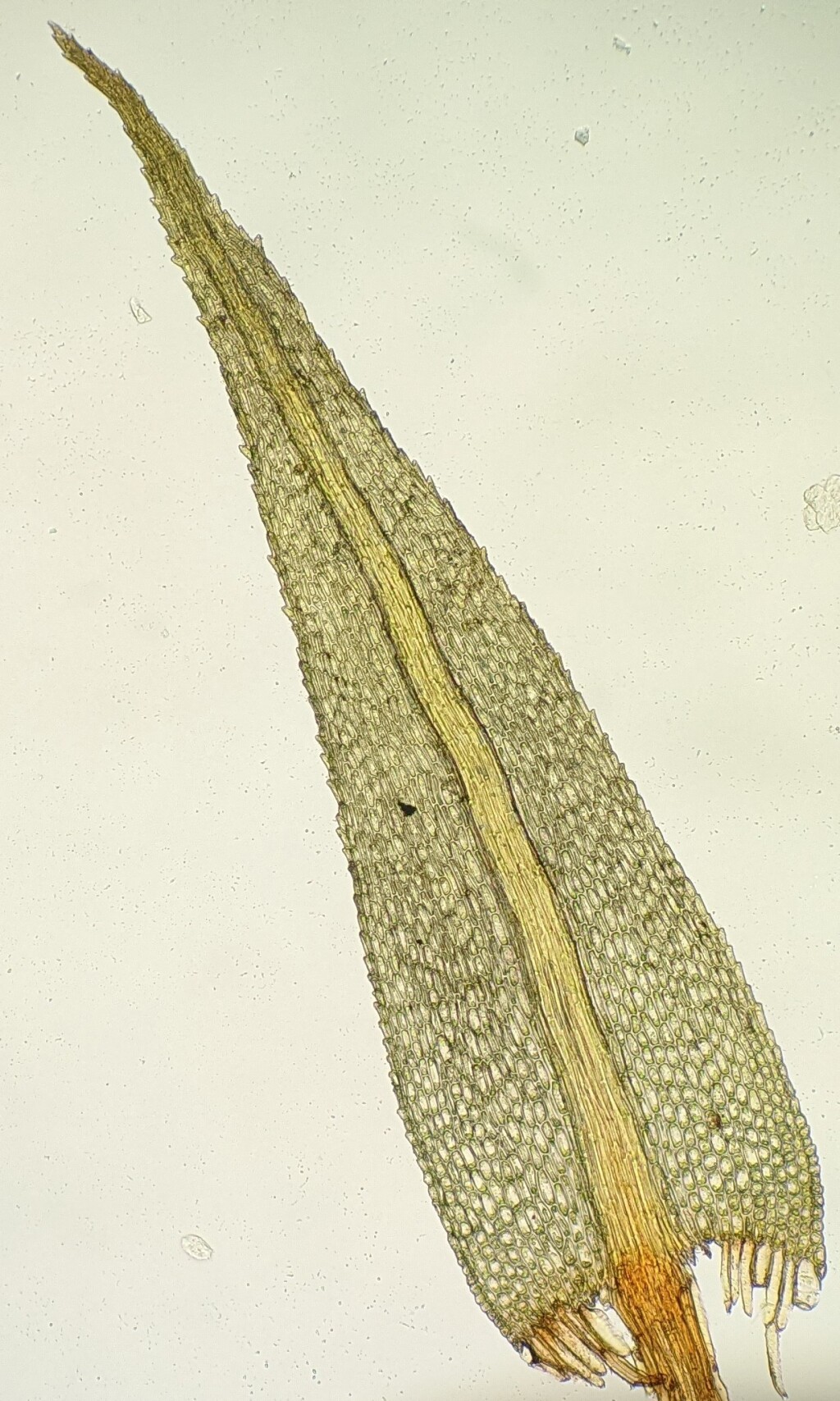Philonotis tenuis
(Taylor) ReichardtDense tufts on soil or rock. Stems 5–35 mm long, simple or shortly branched near apices, green or reddish, tomentose with brown rhizoids near base. Leaves erect to wide-spreading, rarely slightly falcate-secund, scarcely altered when dry, triangular-lanceolate to ovate-lanceolate, 0.7–1.5 mm long, 0.2–0.5 mm wide; apices acute to acuminate; costae percurrent to excurrent in denticulate arista; margins singly or doubly denticulate to serrate, reflexed, without a border; basal laminal cells long-hexagonal, rectangular or subquadrate, 10–50 (–80) μm long, 8–20 μm wide, smooth; other laminal cells 20–62 μm long, 4–10 μm wide, prorate. Setae 10–25 (–30) mm long, reddish. Capsules horizontal to pendent, rarely erect, sub-globose to short-cylindric, rarely urceolate, slightly curved, 1.25–2.5 mm long. Opercula conic. Peristome double.
GleP, VVP, VRiv, GipP, OtP, WaP, Gold, CVU, GGr, DunT, NIS, EGL, EGU, WPro, HSF, HNF, OtR, Strz, HFE, VAlp. Widespread along and south of the Great Dividing Range on moist soil often near or beside creeks or on track embankments from the alpine zone to sea-level. Also all other states and territories. New Zealand and Africa.
 Spinning
SpinningGilmore, S.R. (2006). Philonotis. Flora of Australia 51: 265–270.
